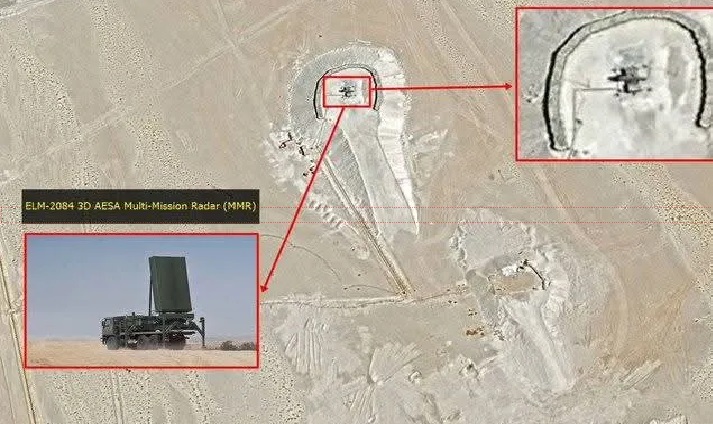UAE bases in Horn of Africa: Israeli radars, logistical corridors linking Yemen to region
SANAA, Oct. 04 (YPA) – Satellite imagery, diplomatic reports, and press investigations reveal that the United Arab Emirates (UAE) has, in recent years, expanded an intricate network of military bases, ports, and runways spanning Yemen and the Horn of Africa.
This expansion involves the increasing integration of Israeli military technology, cementing a security and intelligence role that serves the interests of the occupation in the Red Sea and Gulf of Aden.
Israeli Radar Integration and a ‘Circle of Bases’
According to the British news website Middle East Eye (MEE), Abu Dhabi deployed an Israeli-made ELM-2084 radar (the multi-mission radar used in the Iron Dome system) in Bossaso (Puntland, Somalia). This was part of secret arrangements intended to protect UAE facilities and monitor attacks by Sanaa forces on shipping lanes.
Another MEE report outlines the broader strategy: a “circle of bases” stretching from the coast of Somalia to the Socotra Archipelago and Bab al-Mandab, enabling growing maritime influence and solidifying close security ties with the Israeli occupation.
Strategy of Proxies and Denial
This strategic deployment is not occurring on Emirati soil but through local proxies. These include the UAE-backed Southern Transitional Council (STC) and Tariq Saleh’s forces in Yemen and the Puntland and Somaliland authorities in Somalia. This approach provides layers of plausible deniability and minimizes the direct political cost.
In 2022, the Associated Press (AP) documented the construction of an airbase with a nearly 1.85 km runway on Mayoun Island (Preem), verified through satellite images and official Yemeni testimonies. This is significant given the island’s crucial position controlling one of the world’s most vital trade and energy arteries. Recent imagery updates show continued development on the island, linking the network between Yemen and the Horn of Africa.
To the east, Emirati influence is expanding in the Socotra Archipelago (notably Abd al-Kuri and Samhah islands), where runways and facilities are being constructed to enhance monitoring of shipping routes from the Indian Ocean to Bab al-Mandab.
Reports documented the construction of a new runway in Abd al-Kuri in 2024–2025, coinciding with the escalation of attacks by Sanaa forces on shipping and missile launches toward the Zionist entity.
Media leaks suggest a joint UAE-Israeli base on Socotra to boost maritime control.
The UAE as a Gateway for Israeli Influence
On the African side, Bossaso and Berbera serve as logistical pillars. In Bossaso, 2024–2025 saw the construction of fortified facilities, drone platforms, and radar towers, including—per OSINT reports—the Israeli ELM-2084 radar, which extends detection range hundreds of kilometers over the Gulf of Aden.
Berbera’s longer regional runway (around 4.1 km) and deep-water port, developed through UAE-led companies, make it a crucial nexus connecting the bases in Yemen and the Somali coast, capable of receiving heavy transport aircraft to feed supply lines across the two shores.
Sudanese Connection and Legal Scrutiny
The implications of this network extend to the war in Sudan. While the UAE officially denies arming the Rapid Support Forces (RSF), international media and UN expert panels have documented suspicious flight paths, particularly IL-76 flights to Chad, suspected of supplying the RSF militarily, despite Abu Dhabi insisting its shipments are humanitarian.
Reuters exposed a sequence of cargo flights from the UAE to a border airstrip in December 2024, which the UN accused of supplying the militia.
Furthermore, in September 2025, the Washington Post presented open-source evidence of advanced systems flowing into Sudan, noting multi-sourced roles, including the UAE’s, amid continuous Emirati denial. Sudan has also filed a lawsuit against the UAE at the International Court of Justice, accusing it of supporting the RSF militia.
An Axis of Hegemony and Security Partnership
This sprawling infrastructure reflects a hegemonic project combining finance, matériel, and flexible alliances. Operationally, the Israeli radars and drone platforms provide extended air and maritime early warning and detection capabilities across Bab al-Mandab, the Gulf of Aden, and the Indian Ocean in an effort to intercept Yemeni missiles and drones aimed at supporting Palestinians against the Israeli occupation.
Geopolitically, operating through local proxies (STC, Puntland, Somalia) mitigates the consequences of violating sovereignty and international law while imposing direct regional costs on the fragility of the affected states (Yemen, Somalia, Sudan).
Ultimately, this security ring is inextricably linked to the context of the war on Gaza. The integration of Israeli technology (ELM-2084 and Iron Dome) at the Bossaso–Socotra–Mayoun nodes transforms the Horn of Africa into a forward-sensing arm to confront Sanaa’s attacks on the Zionist entity. It solidifies a security-technology partnership that is partly declared and mostly covert.
What is evident is not merely “bases,” but a structure of hegemony that controls passageways and redistributes the cost of Red Sea security in favor of ‘Israel’ and its allies, at the expense of the sovereignty of states suffering long-term institutional vacuums.
YPA


